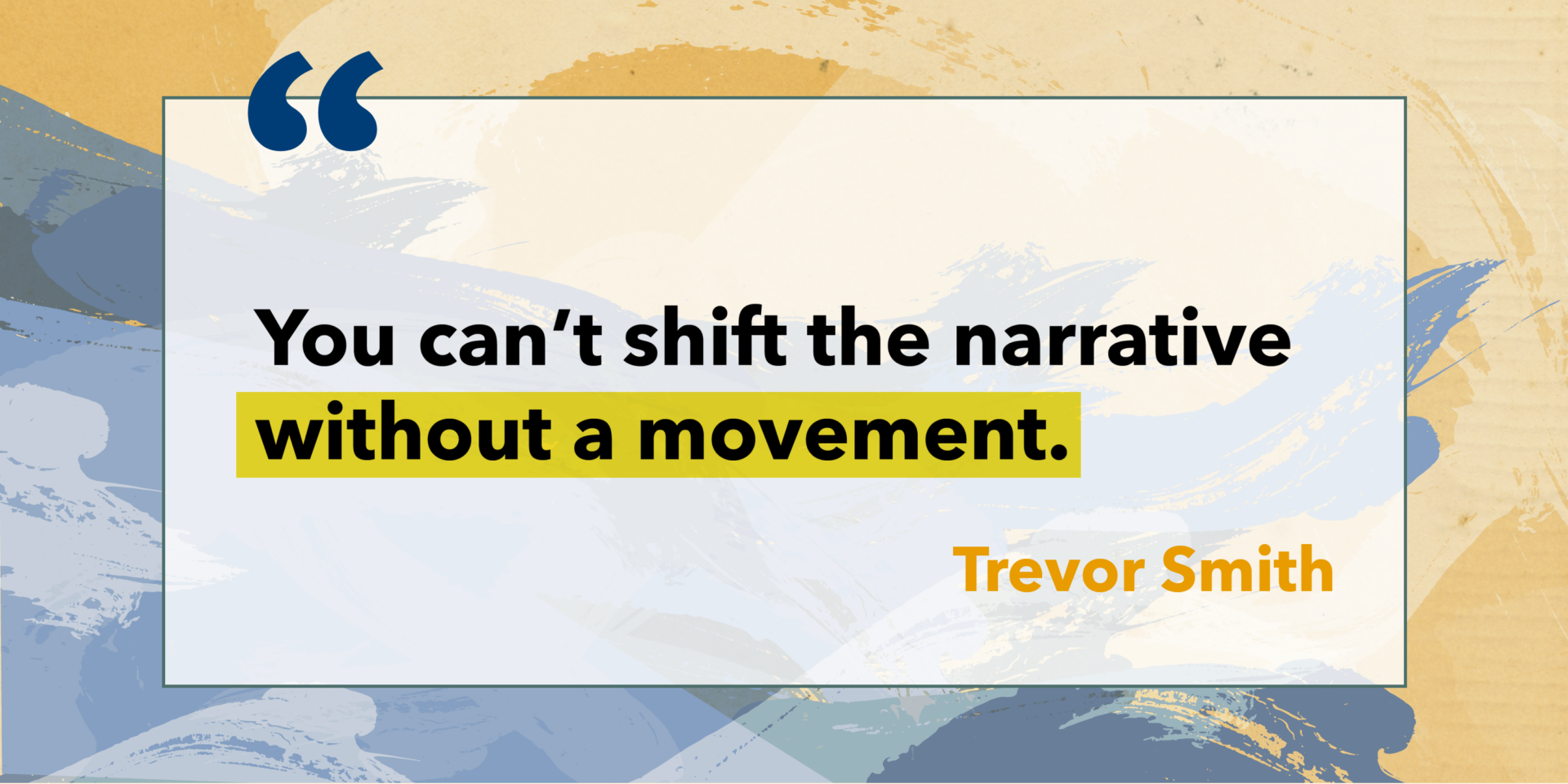Creating the Conditions for Transformation: A Guide to Narrative Change Work
Authors: Lauren Paul, Former VP of Strategic Alliances


Narratives move people, and people move policy. Late last year, we were thrilled to have Trevor Smith—Director of Narrative Change at Liberation Ventures and Common Future Policy Entrepreneur—lead us in a workshop: Narrative Building for Policy Change.
Trevor Smith is an expert in narrative development, specifically around subjects that have the potential to disrupt oppressive economic systems. Through his role leading as the Director of Narrative Change at Liberation Ventures and publishing via Reparations daily-ish, Trevor has developed a nuanced, visionary and audacious approach to narrative change.
Trevor also supported the creation of an economic narrative change grantmaking approach at the Surdna foundation and has supported successful campaigns to end cash bail and legalize marijuana in New York State. In our 90-min session, Trevor walked us through the fundamentals of narrative and movement building, and encouraged us to weave essential narratives around our work into existing conversations. For ease of use, we share highlights from Trevor’s session below.

“The real goal around narrative is not just simply moving someone in the short-term…it’s really about shifting mindsets and worldviews in the long-term.”
What are Narratives?
Liberation Ventures defines narrative as a collection of stories we tell each other, rooted in shared values and common themes that uphold a particular frame or worldview. Narrative Power is the ability to tell stories that shift the mental models and cultural mindsets that define our cultural norms.
- The goal of narrative is to shift perceptions, values, and build collective power. Too often we toil with messaging that meets people where they are instead of actually sticking with the story that communicates our true beliefs.
- Narrative change is a shift in the stories that guide our values and shape how people make meaning of information and experiences. It requires knowing what narratives you’re up against, and putting narratives out there that counter these stories.
- Narrative power is the ability to tell stories that shift the mental models that define our cultural norms.
- Movements shift narratives. Building collective power around a social issue is an important factor in long term narrative and cultural change.

Where nonprofits and grassroots organizations can expand on narrative:
In the nonprofit industrial complex, we generally organize ourselves to focus on what is traditionally known as strategic communications. When we think about strategic communications, it’s generally more about communicating an organization’s mission or a campaign and not creating strategies that will allow us to organize around and go deeper around the set of narratives that surround the issues we care about.
In progressive advocacy spaces, we too often rely on statements instead of relying on story. Protagonists, paths, payoffs, etc. need to play more of a role in our advocacy efforts.
Instead, think about:
- How can we get our strategies, issues, and organizing in the mainstream media by weaving our narrative with an existing narrative?
- Verbal and nonverbal messaging by phrasing things to fit the audience.
- Building coalitions wherever possible
- What is the story around what you’re advocating for?
- What are the deep narratives, messages, stories, and core narratives that make your narrative framework tangible and digestible?

“In progressive advocacy spaces, we too often rely on statements instead of relying on story. Data doesn’t move people, stories do.”
Why is narrative change critical?
Traditionally, in conventional advocacy campaigns, there are three buckets of campaign strategy: The Air Game, the Inside Game, the Ground Game. Narrative Change is critical because it adds something different–the Heart Game.
- Air Game: Strategic Communications
- Inside Game: Public Policy and Advocacy
- Ground Game: Grassroots and Field Organizing
- Heart Game: Cultural and Narrative Strategy. Stories have a character, evoke emotions, tell about events with both happy and unhappy endings. Think of narratives as the averages of stories.